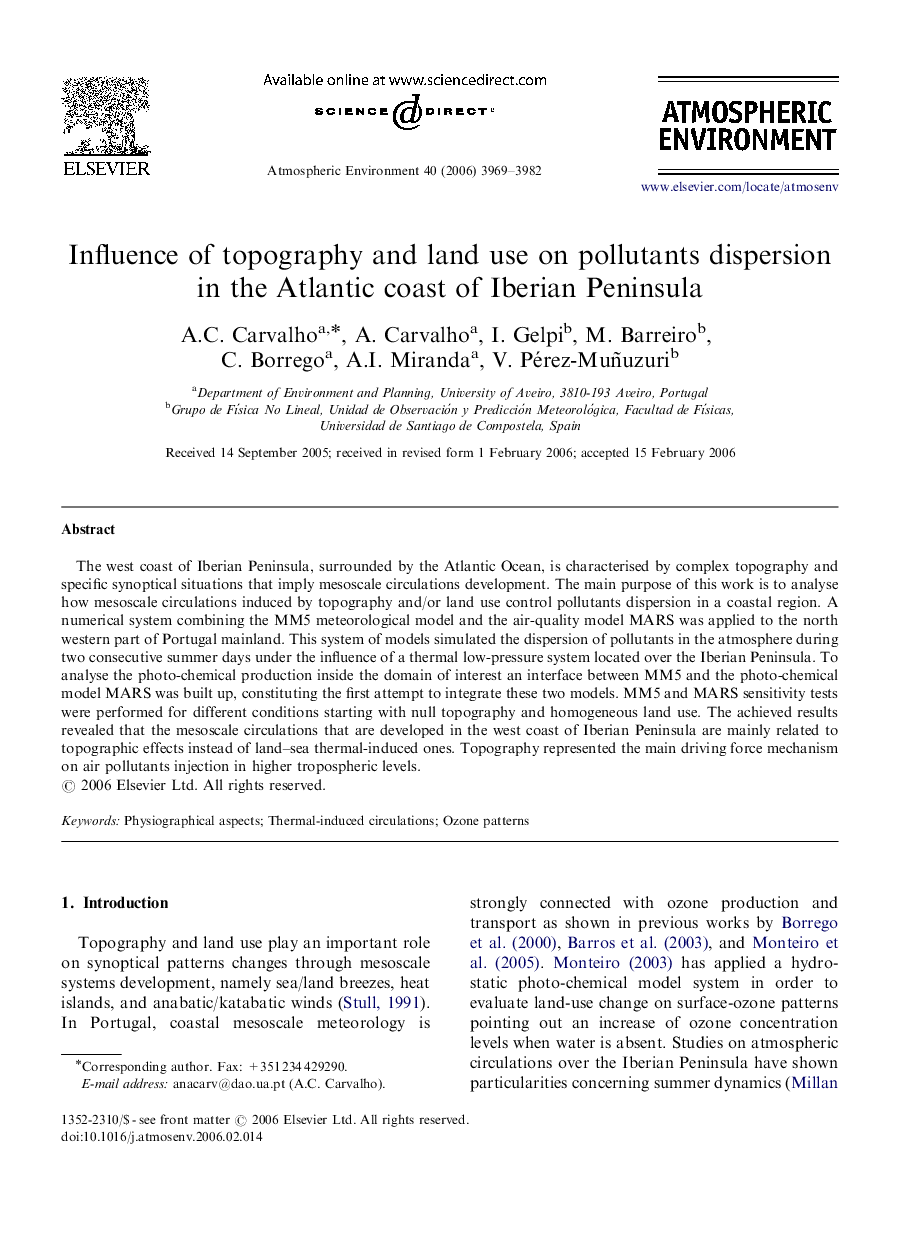| Article ID | Journal | Published Year | Pages | File Type |
|---|---|---|---|---|
| 4444608 | Atmospheric Environment | 2006 | 14 Pages |
The west coast of Iberian Peninsula, surrounded by the Atlantic Ocean, is characterised by complex topography and specific synoptical situations that imply mesoscale circulations development. The main purpose of this work is to analyse how mesoscale circulations induced by topography and/or land use control pollutants dispersion in a coastal region. A numerical system combining the MM5 meteorological model and the air-quality model MARS was applied to the north western part of Portugal mainland. This system of models simulated the dispersion of pollutants in the atmosphere during two consecutive summer days under the influence of a thermal low-pressure system located over the Iberian Peninsula. To analyse the photo-chemical production inside the domain of interest an interface between MM5 and the photo-chemical model MARS was built up, constituting the first attempt to integrate these two models. MM5 and MARS sensitivity tests were performed for different conditions starting with null topography and homogeneous land use. The achieved results revealed that the mesoscale circulations that are developed in the west coast of Iberian Peninsula are mainly related to topographic effects instead of land–sea thermal-induced ones. Topography represented the main driving force mechanism on air pollutants injection in higher tropospheric levels.
